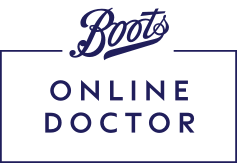Get the Hormone Replacement Therapy treatment (HRT) you need to start feeling like you again
FIND OUT MORE Read on for our tips & treatments to help you nod off & manage sleeplessness during menopause
Menopause and sleep don’t always go hand-in-hand. Oh, hello night sweats, hot flushes and heart palpitations. But with a few simple lifestyle tweaks you can help ease the symptoms of menopause and get back to the land of nod.
What is menopause?
Menopause is the period in a woman’s life when menstruation stops. Symptoms usually begin between the ages of 45 and 55, with the average age being 51. As a woman begins the march towards menopause, levels of oestrogen, progesterone and testosterone begin to drop. This hormonal rollercoaster can throw you off-kilter, leaving you fatigued and deflated.
Is menopause affecting your sleep?
Menopause can lead to lack of sleep for many people. Why? It’s thought that a fall in oestrogen and progesterone affects the body’s temperature control, which can often lead to hot flushes and night sweats. These short, sudden feelings of heat – usually in the face, neck and chest – can make skin feel sweaty, and make catching those all-important ZZZs a real challenge.
Although hot flushes can happen without warning, they can also be triggered by a whole range of things, including eating spicy food, drinking caffeine or alcohol, smoking, wearing thick clothing and feeling stressed or anxious. Our advice? Skip the nightcap and vindaloo and trade them for a night-time tea.
Treating the symptoms of hot flushes
Treating the symptoms of hot flushes can help make drifting off a little easier. The most effective treatment for hot flushes during menopause is hormone replacement therapy (HRT).
HRT – which is available as a tablet, skin patch or gel – replaces depleted hormones. There are two main types of HRT:
• Combined HRT (oestrogen and progestogen) – for people who still have their womb
• Oestrogen-only HRT – for people who’ve had their womb removed in a hysterectomy
You can get HRT by speaking to your GP or via our Menopause and HRT Treatment Online Doctor Service.*
Although HRT is effective at relieving hot flushes and night sweats, there are a number of side effects and risks. Discuss the risks and benefits of HRT with your GP or consider various other treatments to help cope with sleep problems in menopause.
The Boots Menopause & Me range has been designed to help support the menopause journey. Keep the Reusable Cooling Compress in the freezer for when a hot flush hits. For on-the-go relief, try the Instant Cooling Packs – simply snap to activate for a quick cool down, wherever you are. The Wearable Neck Fan provides instant relief for the face and neck, thanks to its three hands-free speeds.
Don’t let sleeplessness get you down
Treatments aren’t the only thing that can help ease sleeplessness. Why not try some of these simple lifestyle tweaks to help you drift into a sweet slumber?
• Establish a relaxing routine before bed – try dousing your pillow in lavender spray or learn how to breathe mindfully
• Exercise during the day – there are many benefits of exercise including helping decrease stress levels, improving sleep and lowering core body temperature
• Wear loose, light clothing to help you stay cool
• Try a bedside fan and avoid using heavy blankets or sheets on your bed
• Have a cold drink. We love Chilly's reusable water bottles to keep your water cold for 24 hours
• Maintain a healthy weight – we’ve plenty of advice on sticking to weight goals here
• Consider a herbal medication such as Nytol Herbal Tablets**
• Avoid smoking – here are some tips to help stop smoking if you’re struggling to stub out that habit
• Avoid drinking alcohol and caffeine
• Avoid eating spicy foods
Prime your body for snoozing with our simple lifestyle tweaks and help leave hot flushes and night sweats in the past. Go on, start boosting your odds of sleep today!
If you’re concerned about menopause and sleep loss (including insomnia) book an appointment with your GP.
* Treatments subject to a consultation with a clinician to assess suitability. Charges apply.
**A traditional herbal medicinal product used for the temporary relief of sleep disturbances. Exclusively based on long-standing use as a traditional remedy. Always read the label.
§The Mtick symbol has been developed with Gen M to signpost menopause-friendly products or services that relieve, ease or support one or more of the 48 signs or symptoms of menopause.





